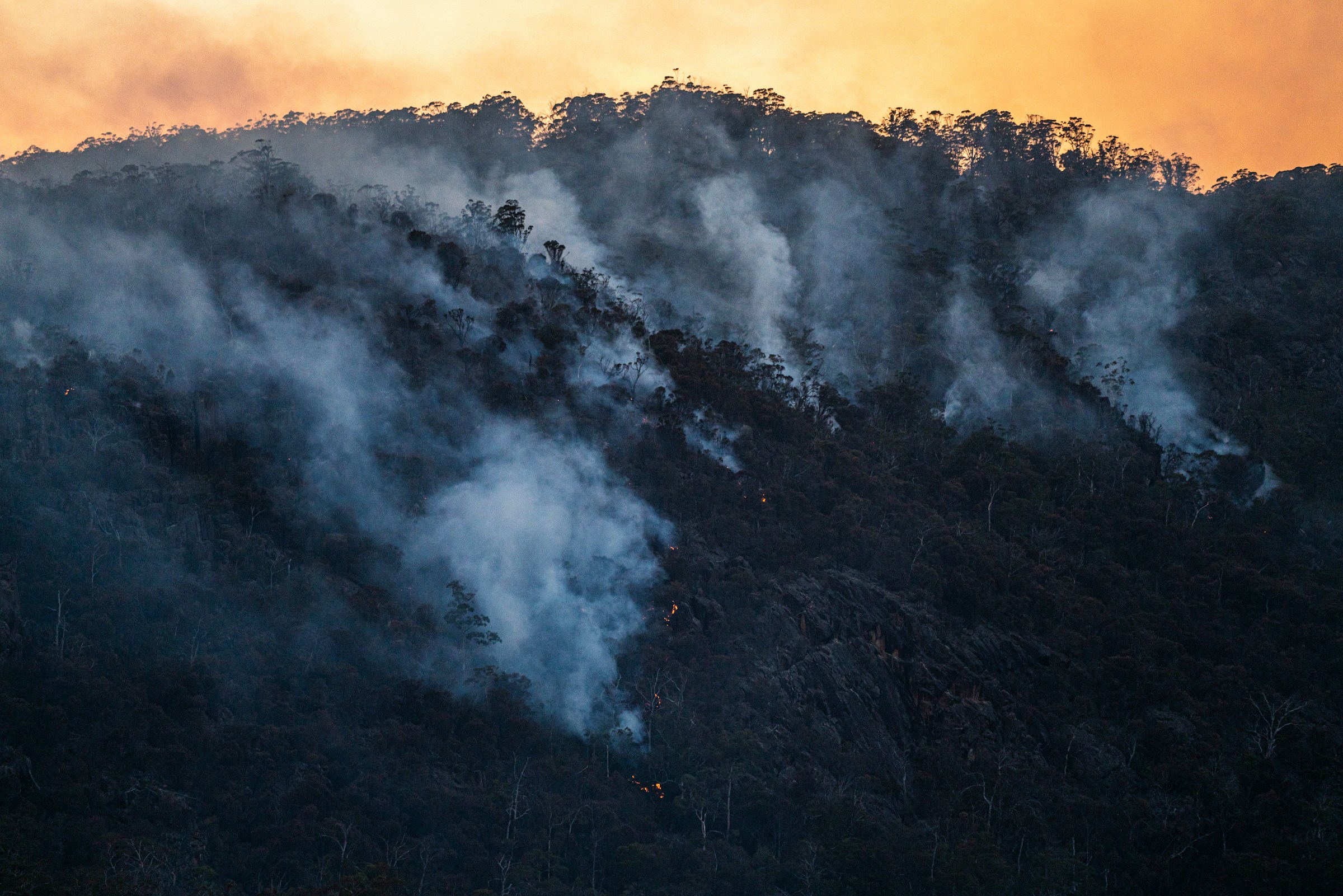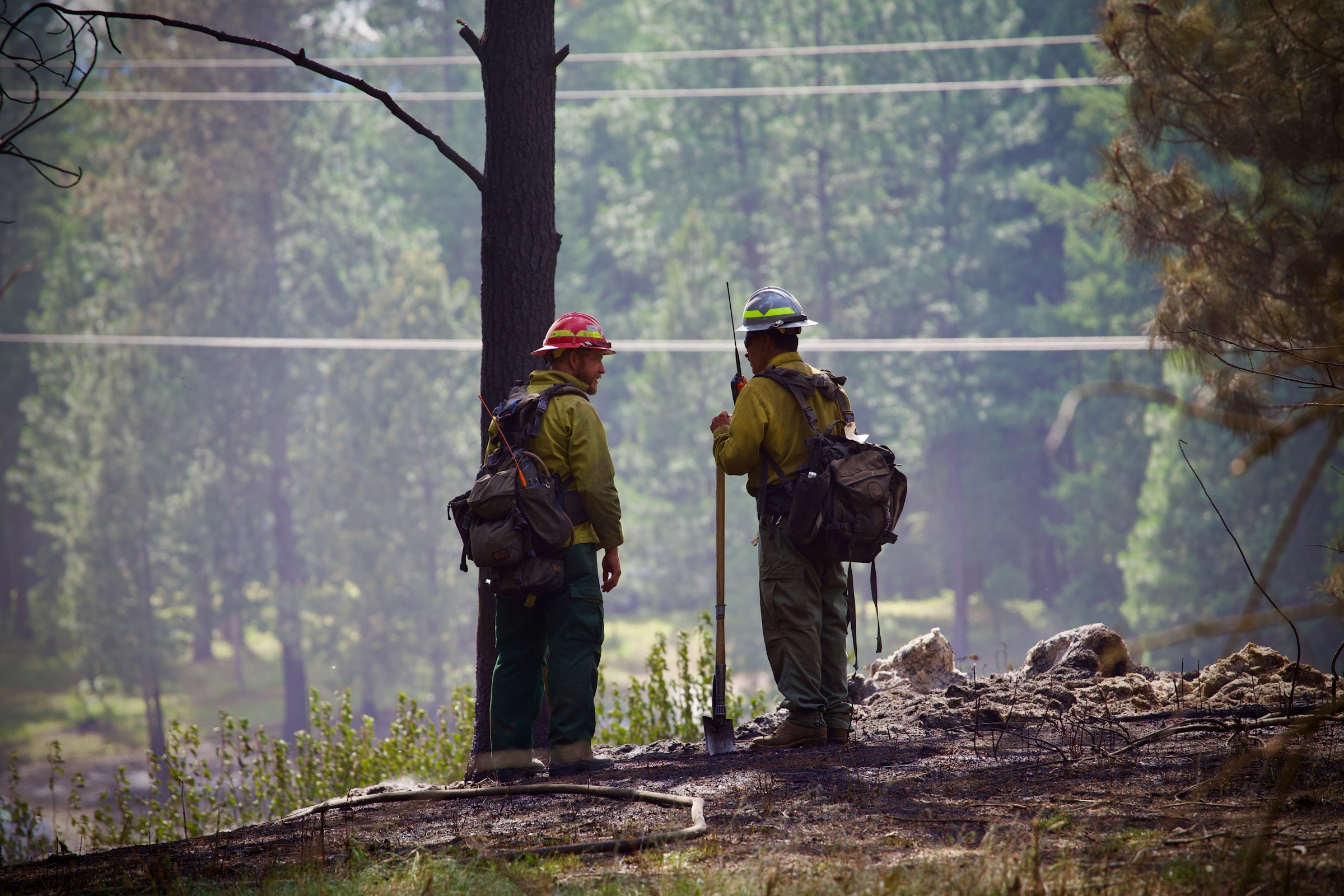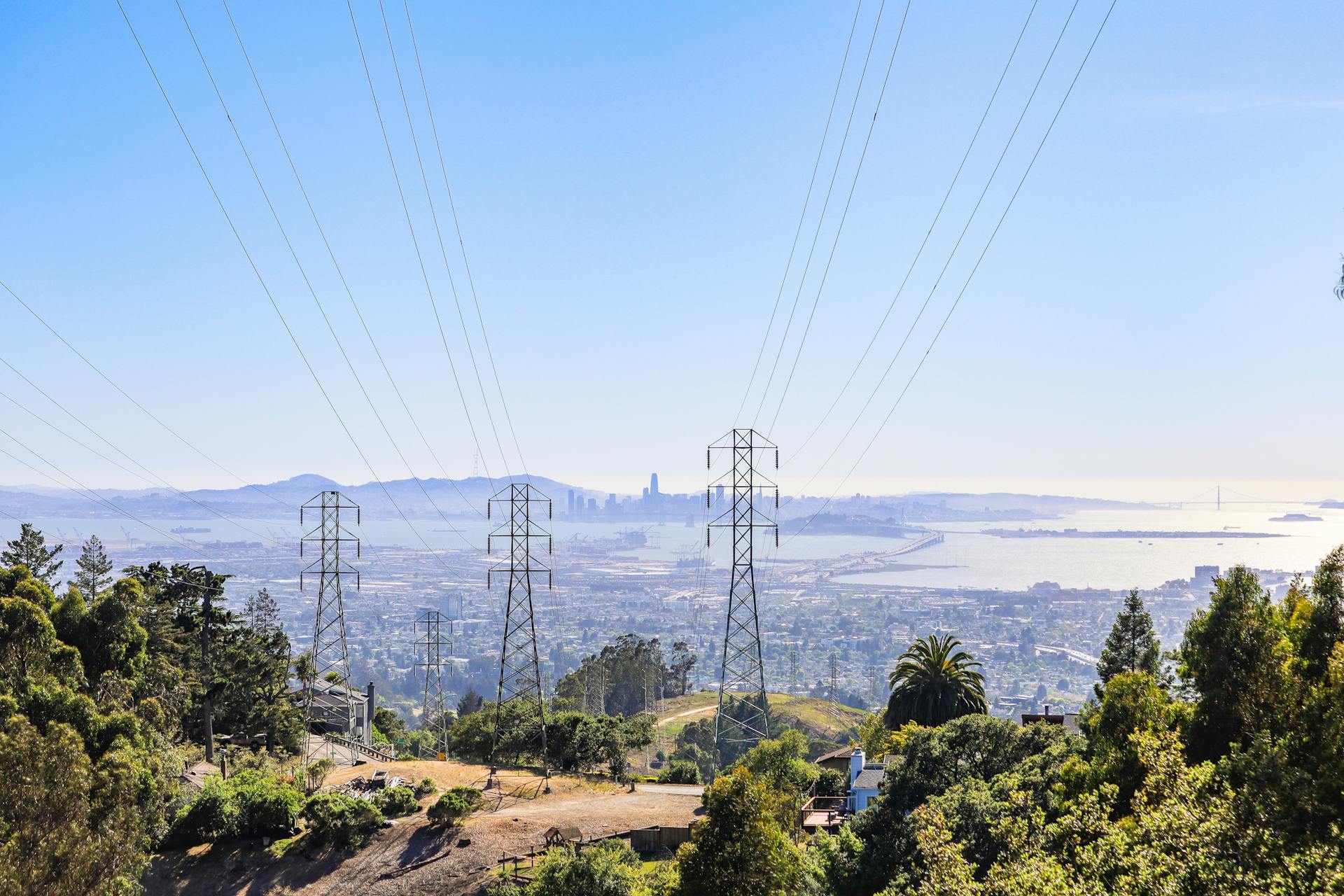
Also known as re-ignitions, holdover fires, and rekindled fires, a zombie fire is a fire that officials thought was fully extinguished, yet burning matter (firebrands) and hot spots remain. Under the right conditions, these hidden embers can be re-ignited, leading to another fire. In some cases, firebrands may last for days or even months without detection.
Zombie fires are more common than you may realize. The destructive Palisades Fire earlier this year was a zombie fire. There are also other “zombie” terms relevant to California’s increasing wildfire risk. There are wildfire dangers involving so-called zombie forests in the Sierra Nevada mountain range, and our attorneys are investigating the possibility that a zombie power line caused the Eaton Fire earlier this year.
Let’s explain zombie fires, zombie forests, and zombie power lines, and why these are all major concerns for people throughout California. If you’ve been affected by a utility fire, the team at Danko Meredith is here to help. For a free consultation, contact our Bay Area law firm today. You can reach our Redwood City office by phone at (650) 453-3600.
Understanding Zombie Fires
Just when it seems like a brushfire or wildfire is extinguished, that may not be the case.
Fire crews work diligently to locate hot spots and douse any embers, but zombie fires can persist even when these officials do everything right. An ember might be buried under leaves and brush, undetected in a log, smoldering underground in tree roots, or otherwise difficult to spot despite someone’s best efforts. There are even cases in which a tree’s roots continue to burn underground and unseen.
Since these firebrands can last for many days or even weeks, all it takes is a strong wind and nearby dry material to set off another fire.
Perhaps most distressing, zombie fires can last underground for months, even beneath snow and through the winter. The CBC reported in 2024 that over 100 “overwintering” fires were still smoldering under the snow and despite the cold weather. The Canadian wildfire season had technically ended, but the zombie fires persisted and carried over into the new year.
What Causes Holdover Fires to Re-Ignite?
With zombie fires and holdover fires, reignition is possible under these conditions:
- Dry Weather: When it’s dry and there’s just enough of an oxygen supply, a firebrand can last without being fully extinguished.
- Heavy Winds: A strong wind may help stoke an ember, generating more heat in the process. These winds can also pick up burning embers, which may start a fire elsewhere.
- Ample Fuel: Any dry leaves, brush, grass, and other combustible materials near a hot spot could ignite, setting off a fire in the process.
Climate Change May Contribute to More Rekindled Fires
We need to note the extreme weather conditions caused by climate change and how that can lead to more zombie fires. According to a 2021 CBSN report, climate scientists and fire ecologists found that zombie fires have become more common in the last 20 years.
This particular report focused on fires in Alaska, where hot spots can remain hidden under peat to reignite later. Yet we can also consider climate change, causing dry conditions and stronger winds in other fire-prone areas. As droughts and strong winds remain a concern in Northern California and Southern California, there’s a danger that fire crews may miss a hot spot with tragic results.
Are Zombie Fires a Potential Hazard in California?
Yes, and they’ve been a major danger in California for decades.
An article in the New York Times chronicled the state’s history with holdover fires and the growing challenges in fully containing a blaze. California fire crews are highly experienced in containing wildfires, yet lingering firebrands can still evade detection despite crews dousing flames just yards away.
The Tunnel Fire (1991)
The New York Times report recounted the Oakland Firestorm that started near the Caldecott Tunnel. A small grass fire seemed to be put out by nighttime, yet by the next day, strong winds had kicked up stray embers, which quickly consumed dry pine needles and Eucalyptus leaves before burning out of control.
The resulting fire killed 25 people and destroyed almost 3,500 homes. The conditions were right for a disaster: California’s years of drought created lots of dry fuel, the winds were heavy, and some undetected embers lingered before fire crews could douse them.
The Palisades Fire (2025)
Current reporting suggests that former Pacific Palisades resident Jonathan Rinderknecht intentionally started a fire on a hiking trail on New Year’s Day 2025. This eight-acre brush fire was thought to be extinguished. However, authorities now believe that embers from that initial fire smoldered underground for days. The strong Santa Ana winds, with average gusts around 60-80 miles per hour, re-ignited these embers.
The resulting Palisades Fire (which started on January 7th) is the third most destructive fire in California history. There were 12 deaths and more than 6,800 structures destroyed in Pacific Palisades, Topanga, and Malibu. It’s currently estimated that the Palisades Fire caused $25 billion in damage.

Climate Change and Zombie Forests
Zombie fires are just one of California’s big concerns for the future. Climate change has also led to something known as zombie forests.
When climate change and shifting environmental conditions can no longer support the existing flora in an ecosystem, the trees in that area are unlikely to survive. Climate scientists have used the term “zombie forests” to describe this particular situation.
According to a Spectrum 1 News report, up to one-fifth of the conifer forests in the Sierra Nevadas are now zombie forests.
What Zombie Forests Mean for California’s Wildfire Dangers
If a zombified part of the Sierra Nevadas is cleared out by a wildfire, conifers may not grow back in that area. Instead, chaparral shrubland may develop over time in that ecosystem. As Spectrum 1 News pointed out, chaparral shrublands are more prone to high-intensity forest fires than the current conifer forests in that area.
Now consider the Caldor Fire in 2021, which was started by a single bullet. That fire in the Sierra Nevadas burned over 221,000 acres. What happens when the conifer forests in that area grow back, if they do at all? If chaparral shrublands eventually grow in that area, there’s a serious danger to anyone in the region.
This is yet another reason to consider the long-term effect of climate change on California’s future. If a substantial portion of the Sierra Nevadas changes, there could be a much higher risk of a megafire when there’s a lightning strike or a malfunction with a power line.
What Is a Zombie Power Line?
That brings us to “zombie power lines.” A zombie power line refers to a decommissioned power line that suddenly and unexpectedly re-energizes. Southern California Edison (SCE) used the term while investigating the ignition point of the Eaton Fire.
You may not have heard this particular phrase before, which speaks to the unique nature of this issue.
Did a Zombie Power Line Cause the Eaton Fire?
This is currently under investigation, though the likelihood seems high. In a report from KTLA 5, a spokesperson for SoCal Edison said they were investigating a possible zombie power line in the canyons above Altadena. Another NBC Bay Area report notes that the electrical tower that may have started the blaze was disconnected from the power grid in 1971. Santa Ana winds potentially pushed live lines from nearby towers close enough to the dead lines to re-energize them.
Why were the disconnected tower and the dead lines still up after all this time? After all, state law has mandated that abandoned power lines be taken down. As NBC Bay Area revealed, the rules changed in 2005, allowing utility companies to determine if it’s worthwhile to take down these unused power lines.
SCE claims that it kept that idle Eaton Canyon tower in place just in case it was needed in the future. If a zombie power line did cause the Eaton Fire, we can see why utilities need to remove potentially dangerous equipment that’s been abandoned and unused for years.

Who Is Liable in Zombie Power Line Wildfires?
When utilities like SCE decide to leave abandoned equipment in place, they’re liable for any wildfire or potential damage that’s caused. That’s why there’s a federal lawsuit against SCE for its role in the Eaton Fire.
For survivors of the Eaton Fire, it’s worth reaching out to an attorney to find out your options for compensation. Recoverable losses from a legal action may include damage to property, diminished property value, lost wages, evacuation expenses, medical bills, and emotional distress.
SCE Is Trying to Dodge Major Payouts from the Eaton Fire
You may have seen some news about SoCal Edison’s Wildfire Recovery Compensation Program for victims of the Eaton Fire. This may seem fair on its surface until you see through it. Our law firm has noticed that SCE is offering a fixed amount with no negotiations or independent oversight. We’ve also noticed that there’s no timeline on when Eaton Fire victims will receive payment.
At Danko Meredith, we feel it’s important for wildfire survivors to be paid for their actual losses rather than accepting a one-size-fits-all offer. Instead of taking what SCE hands out, reach out to our lawyers and tell us how the Eaton Fire affected your life. We’ll advocate for you so you can receive the damages you actually deserve, not what SoCal Edison thinks you deserve.
Examples of Utility Negligence That Lead to Fires
Zombie power lines are just one example of negligence by a utility company. Many utility wildfires are the result of these other examples of negligence:
- Poorly Maintained Electrical Equipment: Some utility companies neglect their equipment that’s currently in use, believing that it’s more cost-effective to let power lines and transmission towers fall into disrepair than to maintain them. This run-to-failure mentality put millions of Californians in danger.
- Trees Making Contact with Towers and Power Lines: Many transmission towers are located in wooded areas with a lot of dry vegetation on the ground below. Utility companies have a duty to clear trees and tree limbs from power lines. When a tree limb makes contact with a tower or a line, it can spark a fire that spreads quickly.
- Failure to Power Down During Wind Storms: Strong winds can make power lines sway uncontrollably. Utilities have the authority to shut power off when heavy winds are present as a precautionary measure. When utilities do not act proactively, wind storms could cause power lines to make contact with other lines, tree limbs, or the tower, which can ignite a massive wildfire.
Notable Utility Wildfires in California
Utility companies have been responsible for some of the most destructive California wildfires in recent years. In addition to the Eaton Fire, other examples of utility wildfires include:
- The Dixie Fire (2021): The Dixie Fire started when a fir tree fell onto one of PG&E’s 12-kilovolt power distribution lines. The contact ignited the dry vegetation on the ground for hours. This massive wildfire burned more than 960,000 acres, affecting numerous communities throughout the Sierra Nevada.
- The Camp Fire (2018): The Camp Fire started when a poorly maintained metal hook on a PG&E transmission tower failed. The loosened power line struck the tower, which sent molten metal into the dry brush beneath. The resulting fire destroyed 15,000 homes and caused 84 fatalities. This wildfire destroyed Paradise, CA, and devastated other nearby communities.
- The Butte Fire (2015): The Butte Fire started when a tree made contact with a PG&E power line, igniting the dry brush nearby. The resulting wildfire burned 70,000 acres and destroyed hundreds of homes throughout Amador and Calaveras counties.
When utility companies are negligent, their mistakes affect regular Californians just like you. If your home or business was damaged or destroyed in a utility fire, you need a law firm that can hold utilities responsible for their actions. That’s where the attorneys of Danko Meredith can help.

Why Hire Danko Meredith for Your Wildfire Case
If you’re suing utility companies like SCE, Pacific Gas & Electric (PG&E), and San Diego Gas & Electric (SDG&E), you need lawyers who have the ability to win. You can trust the attorneys at Danko Meredith to fight for you and level the playing field against these powerful companies. Our lawyers have more than 120 years of combined experience, and we have the knowledge, talent, and resources to hold these utilities accountable.
We Know How to Fight Utility Companies
Danko Meredith has a long and storied history of taking on companies like PG&E in wildfire cases. In addition, our lawyers also worked with survivors of the 2010 PG&E pipeline explosion in San Bruno. We also also working with survivors of the 2023 Maui wildfires in Lahaina, representing them against Hawaiian Electric. Our attorneys know that these companies have large defense teams and a massive warchest. Well, we also have the resources to go to trial, and while we may be outnumbered, we will never be out-lawyered.
We Have a Long Record of Successful Case Results
We encourage you to look through our past case results. Look past the seven-figure and eight-figure outcomes and read the stories of our clients and how we helped them. Many of these cases involved a close attention to detail, finding those compelling bits of evidence that demonstrate how a party was negligent. We’ll look closely at the wildfire, consult with experts who can offer their insight, and construct a winning case. That’s why we have a success rate over 99%.
You Pay Our Lawyers Nothing Unless We Win
If you’ve survived a wildfire, you may not have the financial ability to pay legal fees at the moment. That’s okay. Danko Meredith offers free consultations and we work on cases on a contingency fee basis. That means you don’t have to pay us unless and until we secure a settlement or win damages in court. If we don’t win, you don’t pay. We want you to succeed, and we want utilities to change so they look out for people rather than profits.
Get a Free Case Review with Our California Wildfire Attorneys
If you’ve survived a utility-caused wildfire and are looking for answers, you can trust the team at Danko Meredith to offer support. We always level the playing field when the odds seem stacked against our clients. For a free consultation with our wildfire attorneys, contact our Bay Area law firm today. You can also reach our Redwood City office by phone at (650) 453-3600.
